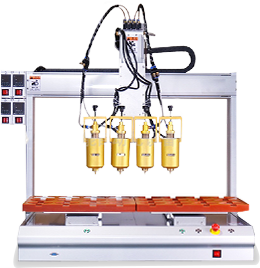

Metal casing stamping parts are precision metal parts of specific shapes and sizes that are formed by applying pressure to metal sheets through presses and dies to cause plastic deformation or separation. It uses high-quality metals such as stainless steel, carbon steel, aluminum alloy, copper alloy, etc. as raw materials. With advanced stamping technology, it can produce a variety of forms from simple flat parts to complex special-shaped parts to meet different product needs. From small protective shells for precision electronic components to large covers for automobile bodies, its size span is wide and can meet the diversified production requirements of various industries.
Features | Detailed description |
High precision | Using high-precision molds and advanced stamping equipment, the dimensional tolerance can be controlled within ±0.05mm to ensure perfect fit with other components. |
Efficient production | Combined with an automated production line, a single device can produce dozens of pieces per minute to meet the needs of rapid delivery of large-scale orders. |
Various materials | Covering stainless steel, carbon steel, aluminum alloy, copper alloy, etc., materials can be customized according to the needs of different industries to meet diverse performance requirements. |
High quality surface | The surface is flat and smooth after stamping, which is convenient for subsequent painting, electroplating, anodizing and other treatments to enhance aesthetics and corrosion resistance. |
Cost advantage | The mold cost is evenly shared under mass production, and the material utilization rate is as high as 85% or more, effectively reducing the production cost of a single piece. |
3. Product Details
1. Material Selection
Stainless steel: It has excellent corrosion resistance and strength, and is often used in the housing of equipment with extremely high requirements for hygiene and corrosion resistance, such as food processing and medical equipment.
Carbon steel: It has high cost performance and good mechanical properties. It is widely used in the manufacturing of housings for general machinery and household appliances, providing reliable structural support.
Aluminum alloy: It has light weight and good thermal conductivity. It is the preferred material for lightweight design in electronic equipment, aerospace and other fields.
Copper alloy: It has excellent electrical and thermal conductivity, and is suitable for the housing of electronic and electrical components with strict electrical performance requirements.
2. Processing Technology
Punching: Use the mold to accurately separate the sheet to form the required blank shape, which is often used to determine the basic outline of the housing.
Bending: Bend the blank through the mold to construct the three-dimensional structure of the housing, such as the edge molding of the car door.
Stretching: Stretching the flat blank into a shape with a certain depth, which is suitable for manufacturing components such as automobile fuel tanks and electrical housings.
Forming: It includes complex processes such as flanging, bulging, and shrinking, which are used to shape the detailed structure of the housing and improve the functionality and appearance quality of the product.
3. Surface treatment
Painting: Rich color selection, effective rust prevention, and improved product aesthetics, widely used in home appliances and mechanical equipment housings.
Electroplating: Such as zinc plating, nickel plating, chrome plating, etc., enhance the corrosion resistance, conductivity and decorative properties of the metal surface, suitable for electronic and automotive parts.
Anodizing: For aluminum alloy materials, a hard oxide film is formed to improve the surface hardness and wear resistance, and it is often used in aluminum alloy housings of electronic equipment.
4. Application areas
Electronic industry: Provide protective housings and electromagnetic shielding functions for mobile phones, computers and other devices.
Automotive industry: Used for body panels, engine hoods, etc. to ensure vehicle structural strength and appearance design.
Home appliance industry: As the housing of home appliances such as refrigerators and washing machines, it has both protective, decorative and supporting functions.
Machinery manufacturing: Manufacture housings and protective covers of various mechanical equipment to protect internal structures and improve operational safety and equipment appearance.
 Headquarters tel.
Headquarters tel. E-mail.
E-mail.